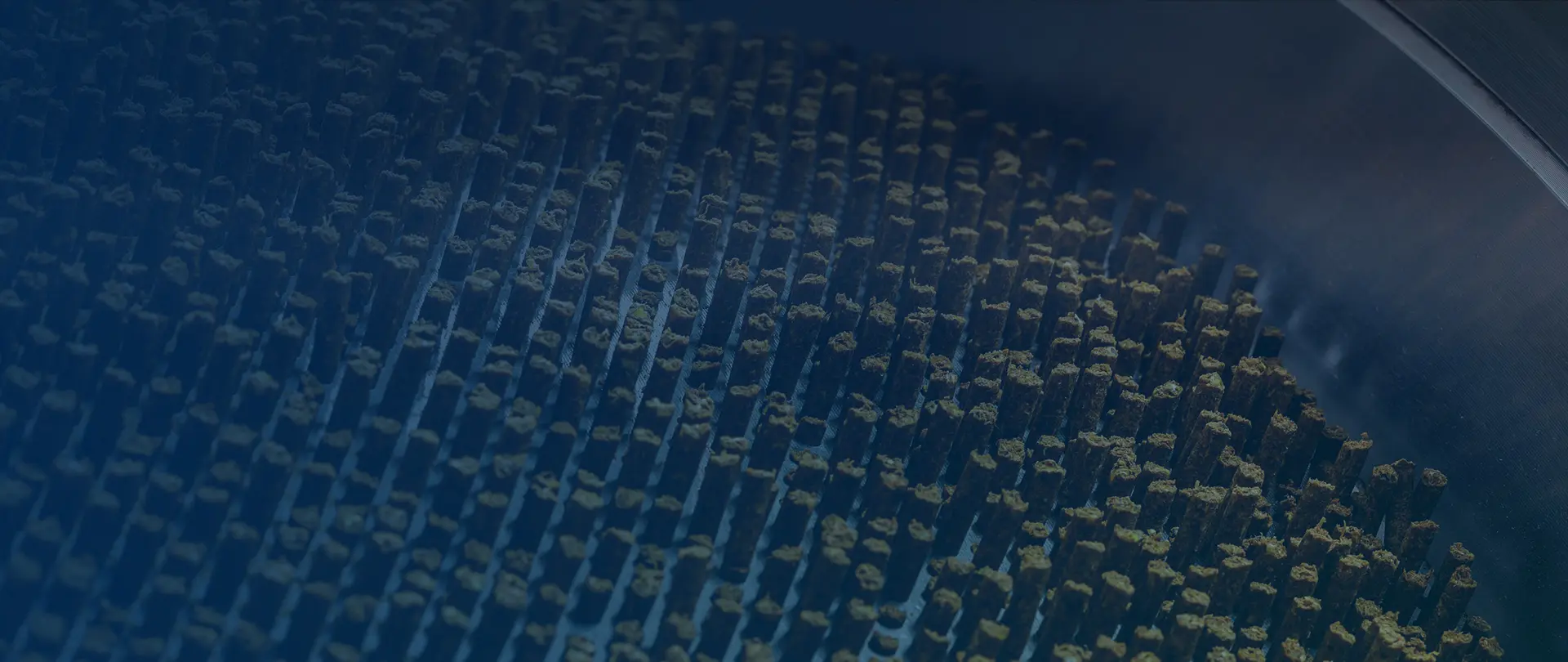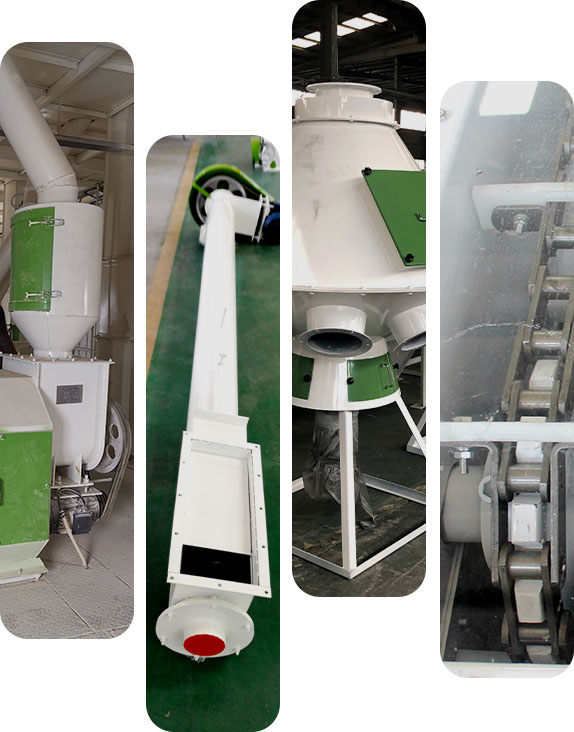
From conveying systems to dust removal and distribution, these machines ensure seamless material flow and improved operational performance. Maximize production output while maintaining the quality and integrity of your pellets.
Learn MoreDepending on your needs, different auxiliary equipment is paired with different pellet production solutions to achieve integrity and continuous rows of pellet production.
RICHI Machinery offers a complete range of core equipment and related auxiliary equipment for pelletizing solutions.

Auxiliary equipment automates material handling and processing, speeding up production cycles and reducing manual labor, allowing for higher output rates.
Equipment like distributors and dust collectors ensure even material distribution and minimize spillage, helping reduce waste and maximizing raw material usage.
Dust removal systems enhance air quality and worker safety by controlling dust emissions during production.
Conveyors and elevators ensure smooth, continuous material flow, reducing stoppages and maintaining consistent pellet production.


What kind of pellet plant do you want to establish?
How many tons per hour about this plant you want to build?
Where is this pellet plant going to be built?
When do you plan to start the operation?
Auxiliary equipment in pellet production are supplementary machines and systems that support the main equipment, enhancing efficiency, quality, and safety throughout the production process. While the pellet mill is the core of the operation, auxiliary devices ensure smooth material handling, precise measurements, and proper environmental control.
Auxiliary devices streamline the entire production process, from material preparation to final product handling. They enhance operational efficiency, ensure product consistency, maintain environmental standards, and reduce equipment wear and tear, making them essential for a well-functioning pellet production line.
Auxiliary devices significantly improve productivity in pellet production by enhancing the efficiency, consistency, and automation of the overall process. These devices, such as conveyors, dust collectors, and cooling systems, streamline material handling and ensure optimal working conditions for the main equipment.
For example, conveyors automate the movement of raw materials and finished pellets between machines, reducing manual labor and minimizing downtime. Dust collectors maintain a cleaner work environment, preventing blockages and protecting machinery from wear, which ensures uninterrupted operation. Cooling systems rapidly stabilize pellets after extrusion, improving their durability and enabling continuous production by quickly preparing the machine for the next batch.
By integrating auxiliary devices into the production line, the workflow becomes more seamless and efficient, reducing delays and maximizing output, while also extending the lifespan of the equipment through better operational conditions.
Yes, they ensure even material distribution and minimize spillage, reducing waste.
Dust collectors maintain clean air, improving worker safety and production quality.
Controlling moisture levels ensures optimal pellet quality and prevents clogging.
In addition to a single shrimp feed granulator or shrimp feed extruder, we have a complete shrimp feed production line and can provide turnkey shrimp feed production engineering. We can provide the main equipment required for the entire shrimp feed production project, such as crushers, granulators, extruders, as well as some auxiliary equipment, such as conveying equipment, dust removal equipment, etc. As for the price of the entire shrimp feed production line, I need to first understand your specific needs, and then have our engineering designer customize a production plan for you. After the shrimp feed production plan is confirmed, we can calculate the price for you. To learn more about the prices of shrimp feed production equipment, please contact us immediately as we have a detailed price list.
Auxiliary equipment significantly improves workplace safety by automating processes, reducing manual handling, and minimizing exposure to potential hazards. For example, conveyors streamline the movement of raw materials and finished products, reducing the need for workers to lift or carry heavy loads manually, which lowers the risk of injuries like strains or sprains. Similarly, dust collection systems effectively capture airborne particles during grinding or pelletizing, ensuring cleaner air and reducing the risk of respiratory issues or dust explosions.
Additionally, auxiliary equipment like automatic feeders and material separators minimizes the likelihood of accidental contact with moving parts, as operators no longer need to feed materials manually. Safety interlocks and emergency stop features in auxiliary systems further enhance workplace safety by allowing operators to shut down equipment quickly in case of a malfunction or emergency. By integrating these tools into production lines, workplaces can significantly reduce accidents, improve environmental conditions, and ensure a safer, more efficient working environment.
Yes, auxiliary devices can optimize efficiency and quality, even in smaller operations. No matter what your output is. Our engineers will redesign and configure the equipment according to your needs and site area.
Distributors play a crucial role in the pellet production process by ensuring the efficient, uniform, and organized flow of raw materials or semi-finished products through the production line. Their primary function is to regulate the distribution of materials to various equipment or processing stages, preventing bottlenecks and optimizing productivity.
In the initial stages, distributors help allocate raw materials, such as sawdust or grains, from storage silos or hoppers to the pre-processing machines like crushers, grinders, or dryers. This precise control ensures consistent feeding, which is essential for maintaining the quality and efficiency of subsequent processes.
During pelletizing, distributors manage the flow of pre-processed materials into the pellet mill. By evenly distributing the material, they ensure the mill operates at full capacity without overloading, which can reduce wear on the equipment and prevent downtime.
Post-pelletizing, distributors aid in sorting and directing finished pellets to cooling systems, sieves, or storage facilities. This organized transfer maintains the quality and integrity of the pellets while ensuring a smooth workflow across the production line.
By eliminating material flow inconsistencies and supporting efficient equipment utilization, distributors enhance the overall reliability and productivity of the pellet production process.
If you need further information, please contact us

Note: Pellet production is a continuous and complex process, requiring many equipment to complete the production from raw materials to finished pellets. Therefore, it is suitable for commercial projects but not for personal use.

RICHI stick to the service principle is: We are focusing on your future, your future is our future!
© HENAN RICHI MACHINERY CO., LTD 1995-2025